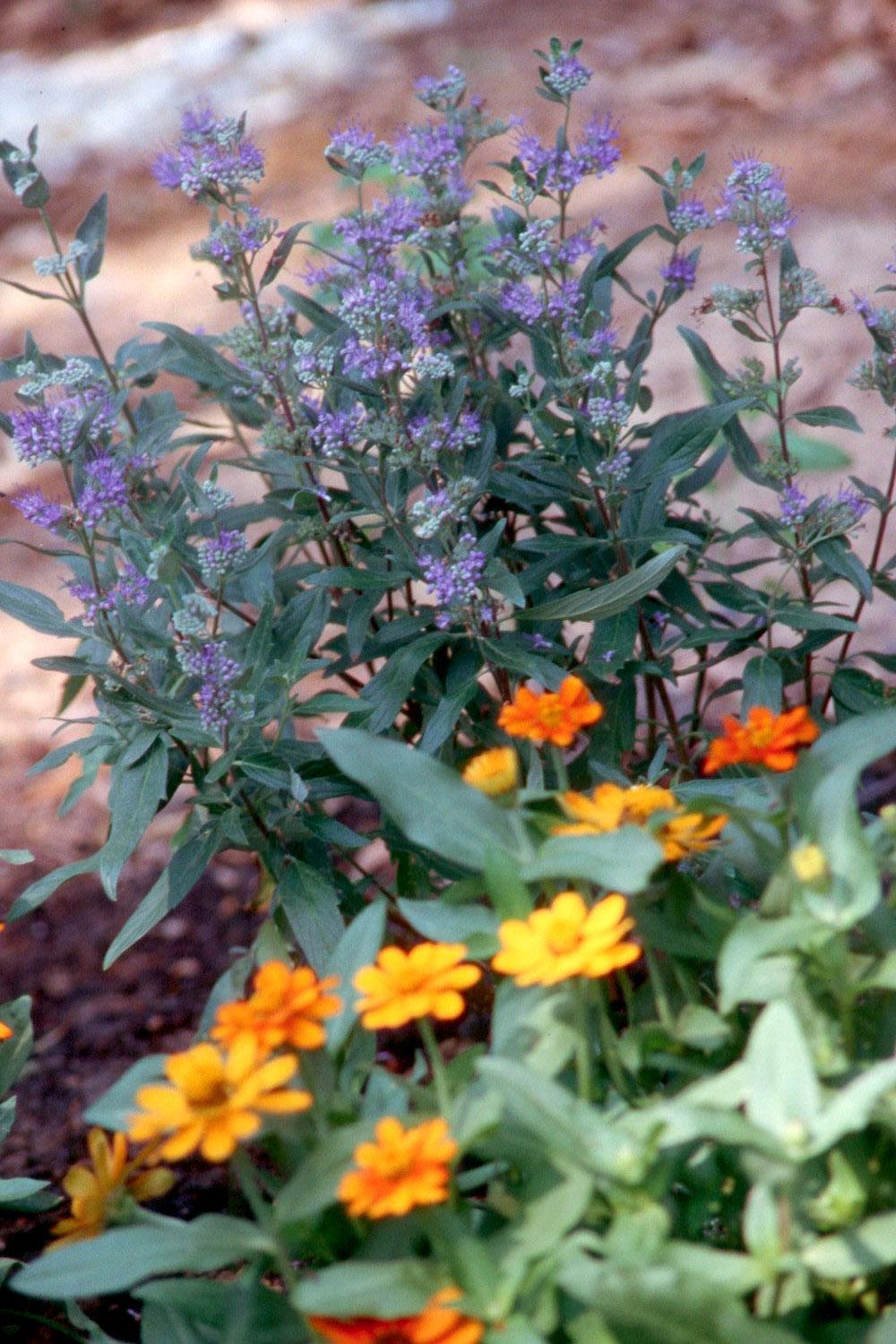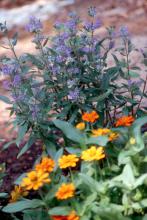Information Possibly Outdated
The information presented on this page was originally released on June 24, 2002. It may not be outdated, but please search our site for more current information. If you plan to quote or reference this information in a publication, please check with the Extension specialist or author before proceeding.
Caryopteris, or Bluebeard, is outstanding in gardens
By Norman Winter
MSU Horticulturist
Central Mississippi Research & Extension Center
It seems that unless a plant is a flashy bloomer like New Gold lantana, then it really doesn't get the recognition it deserves. One such plant is the bluebeard, known botanically as Caryopteris x clandonensis, and called caryopteris by most gardeners who grow it.
This blue-flowering plant is considered a small shrub or returning herbaceous plant. A verbena relative from East Asia, it returns from cold winters and provides welcome blue color from summer through fall. Not only are the flowers a valuable source of blue, but the gray foliage provides added texture in a plant world dominated by dark green leaves.
The caryopteris is also an environmentally friendly plant with few insect or disease pressures and a water requirement that is less than average. Taking all that into consideration, this plant is a joy to grow and is much underused in the South.
Fortunately, I have seen more for sale this year than I have the previous five years combined. Nurseries and garden centers usually have them in gallon containers. If you shop this weekend, you may still find them available. Plant yours in full sun in soil that is well-drained, and the caryopteris will make you look like you have grown a green thumb.
Well-drained soil is crucial because soggy winter soil is the caryopteris' No. 1 enemy.
When planting the caryopteris, remember it is shrub-like, reaching 3 to 4 feet in height. Dig your hole twice as large as the root ball and plant at the same depth it is growing in the container. The top of the root ball should be even with the soil profile.
Next spring, prune it hard to generate vigorous new growth. Blooms are produced on the current season's growth. During the growing season, lightly prune after each bloom cycle to encourage more growth and blossoms.
I like to feed it a light application of a slow-released balanced fertilizer after each bloom cycle. Though drought tolerant, giving it an occasional deep soaking during dry periods will keep the plant producing those colorful blue flowers.
I am growing caryopteris behind the Profusion Orange zinnia, an All-America Selections winner from a couple of years ago. The resulting combination is quite pretty and both plants are tough in Mississippi's sweltering heat. Other good companion plants would be lantana, salvias and purple heart. Try growing large drifts of caryopteris in front of purple coneflowers, rudbeckia or tall selections of gomphrena.
Local variety choices are still small, but supplies are growing and who knows if next year we might have as many caryopteris to choose from as lantanas. My favorite is Dark Knight, with flowers that are a little darker blue than the rest. Other leading varieties to keep an eye open for are Azure, Blue Mist and Longwood Blue. Also watch for Caryopteris incana that is taller and has lavender blue flowers.
It is time to branch out from New Gold lantana and discover the bluebeard, blue mist or as we say around here, caryopteris. It is a great choice to add to your plant color palette.








